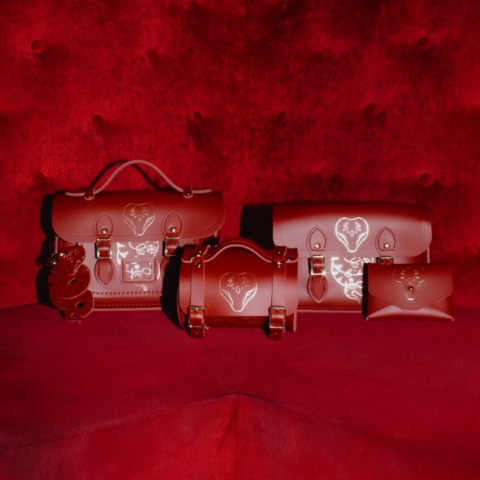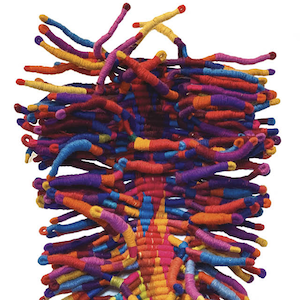Art Meets AI: A New Era of Creativity at Serpentine
By Nhi Phan
Art has always been about evolution. From the first flicker of expression in ancient cave paintings to the Renaissance’s breathtaking masterpieces, from the invention of photography to modern digital experiments, creativity has always found new tools. And now, here we are, standing on the edge of an entirely new frontier, art made with artificial intelligence. But what does this mean for how we create, connect, and understand each other? Find out more at Art Meets AI: A New Era of Creativity at Serpentine.
The image on left Portrait, Herndon Dryhurst Studio
Thousands of years ago, early humans crushed rocks and charcoal in the dim glow of firelight to paint life scenes on cave walls, a simple yet profound way to preserve their stories.
Centuries later, artists in ancient Egypt and the Renaissance elevated these methods, grinding gemstones like lapis lazuli to create pigments of unmatched vibrancy. Each era brought its own painstaking techniques, where every brushstroke carried the weight of labour and love.
It’s incredible to think about, isn’t it? Each step in this journey has brought new ways to express, to question, and to connect. Fast-forward to the Industrial Revolution and mass production freed artists from creating their own painting materials, sparking movements like Impressionism, where light and colour danced with newfound energy.
The 20th century shattered boundaries further, introducing photography, abstract expressionism, and video art. And now, as we enter this era of AI, we’re adding another chapter to this ongoing story, one where human creativity and machine potential meet, expanding the canvas beyond imagination.
The Serpentine gallery in London is where art and innovation collide. Since 2014, they’ve been exploring how artists can push the limits of creativity through technology, especially AI. This is not only about showcasing works, but also about starting conversations, challenging ideas, and opening up new possibilities.
Over the years, they’ve collaborated with groundbreaking artists like Ian Cheng, Refik Anadol, and Hito Steyerl, each using AI to reimagine what art can be. It’s a space where art isn’t afraid to experiment, to ask tough questions, and to imagine the future. And now, with The Call, they’re inviting us to dive into this evolving story together.
The Call is the bold and thought-provoking exhibition by Berlin-based artists Holly Herndon and Mat Dryhurst at Serpentine North. These two artists and visionaries are exploring how AI can be a tool for collaboration and community rather than just cold, mechanical efficiency.
Portrait, Herndon Dryhurst Studio
Their exhibition invites you, quite literally, to be part of the artwork. Imagine standing among layers of human and machine voices, feeling your own presence woven into the harmony.
Herndon and Dryhurst see AI not as something to fear but as a “coordination technology.” Their work takes us back to the timeless ritual of group singing, where one voice calls out and others respond in harmony. Think of it a bit like a rap, when the caller says something and another rapper replies, except this would be singing.
This beautiful exchange, known as “call and response,” has been a part of human culture for as long as we can remember. Found in spirituals, work songs, and folk traditions, it connects people through shared rhythm and understanding, creating a deep sense of unity and belonging that resonates across generations.
In the same way, our ancestors sang together to communicate, we’re learning to navigate today’s AI systems, building new structures for collaboration.
The process behind The Call is as fascinating as the result. Herndon and Dryhurst travelled across the UK, working with choirs to train AI models. From Belfast to Bristol, each choir became part of a vast, collective voice, a dataset turned into art.
Holly Herndon and Mat Dryhurst conducting a recording session in London 2024, Foreign Body Productions
This explores much more than sound. It challenges the way we think about data and collaboration, pushing us to reconsider their ethics. They’ve designed frameworks to ensure the power stays with the people who contribute, weaving humanity into the heart of AI.
And then there’s the experience itself. Walking into The Call is like stepping into a living, breathing AI artwork. You’ll find installations that blur the line between sound and structure, a chandelier-like object playing fragments of voices, and an organ-like sculpture shaped by neural networks. You’ll even get to interact with the AI models, hearing your voice transformed into part of a choral harmony. The space feels alive, filled with curiosity and endless potential.
What’s remarkable about Herndon and Dryhurst is their insistence on keeping art at the centre of these technological advances. They believe AI can be a beautiful, ethical tool if we approach it with care and imagination. And that’s the heart of The Call, it’s not about showcasing AI as a finished product but inviting all of us to be part of its story.
Art has always been about connection, between artist and audience, between past and present, and now, between human and machine. So, why not step into this conversation yourself? The Call is now open at Serpentine North. Go, listen, and maybe even sing. Let’s see where this journey takes us.
The Call is open at Serpentine North from 4 October 2024 to 2 February 2025. Find out more at Here serpentinegalleries.org
If you like reading Art Meets AI: A New Era of Creativity at Serpentine. Why not try reading Stepping Into The World of Kids Art for Adults
.Cent Magazine London, Be Inspired; Get Involved.







